
Guide
Better pet than plant parent? These are the balcony shrubs for you
by Darina Schweizer

Lego flowers are too expensive? Iron bead flower bouquets stand the test of time just as well and are an alternative to the ready-made building block sets. Here are some instructions and tips to save you from frustration when modelling.
Eternal flower bouquets really are great. I’m not thinking of a dried bouquet, but rather of a set from Legos Botanical collection that fellow editor Pia Seidel here presented a few years ago. Since then more and more sets have come on the market and I’ve been toying with them but wasn’t prepared to dig deep into my pockets for.
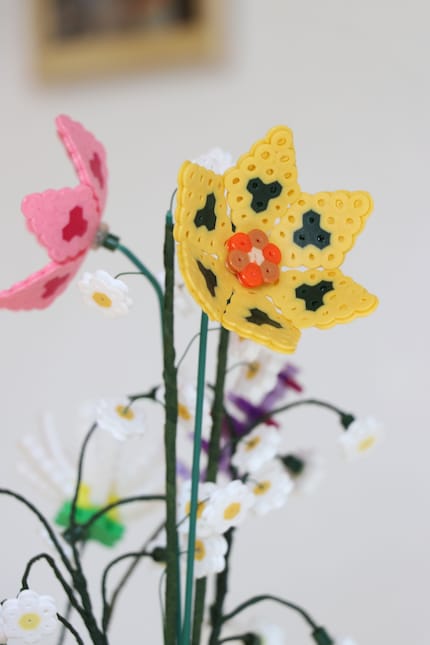
I was all the more excited when I stumbled across this DIY video by Flavie Poirier on Instagram. She makes flower bouquets from iron beads that are strongly reminiscent of Lego’s creations. Clever! They’re not only ideal for decorative purposes, but as gifts too. And it’s also a nice activity for a cosy afternoon with your loved ones.
I didn’t have to convince our DIY queen Stefanie Lechthaler to recreate them with me. We were hoping we could create at least two different bouquets as a team. Yes, nothing came of it. More on our failure despondency later.
This is what you need:
Practical extras:
You may remember iron beads from your childhood. First you assemble the colourful beads on a pegboard to create a motif.
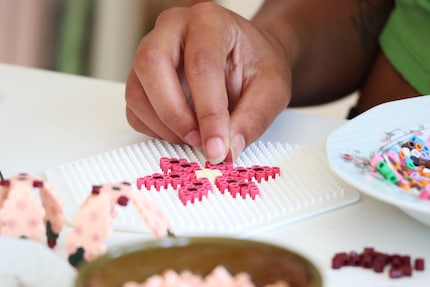
Then you place a piece of baking paper over your creation as a protective layer before ironing it until the beads melt together. Leave to cool, remove from the pegboard and the slightly pixelated iron bead picture is ready.
To make flowers, it’s the same process. Only that you don’t leave it at a one-dimensional image. Immediately after ironing, remove the warm and pliable flower from the pin plate, press it against a curved surface (e.g. in a cup) and leave it to cool. This gives it the funnel shape typical of flowers.
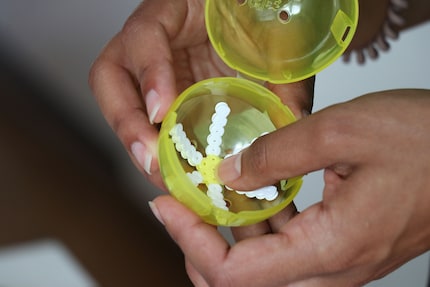
Then, using a hot glue gun, attach the flower to a green wire.
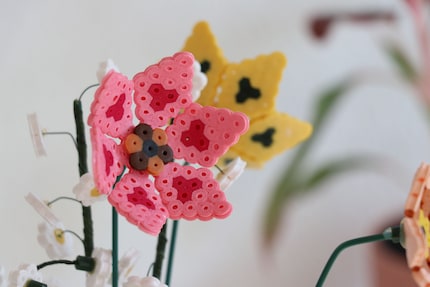
Tie a bunch of flowers together and you have a bouquet.
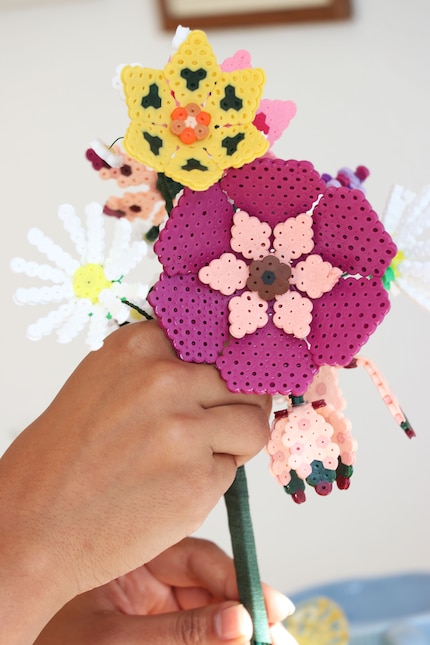
That’s the theory anyway.
When Stefanie and I were making them, we quickly noticed it’s not as simple as the video makes it out to be. In fact, we had quite a few struggles to contend with and we had to improvise in places until we had even a basic bouquet together at the end of the day. We broke more flowers than we created. That’s why we’ve summarised our key findings to make it easier for you to copy.
**Only combine beads from the same brand. ** We’ve found that beads from different manufacturers don’t fuse together seamlessly. As a result, a particularly large number of models fell apart when we were curving the petals.
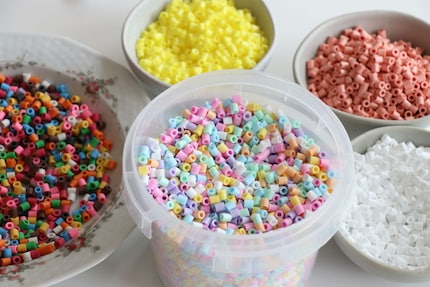
Use slanted tweezers, because sometimes your own (clumsy) fingers can get in the way. After all, placing the beads is precision work.
**Use different pegboards for different flower shapes, both in size and shape, as the arrangement of the individual pegs is different for each board. The star-shaped board offers a good starting position. One of these is included as standard in this bead bucket. It looks similar to a flower and both petals and flower baskets can be easily arranged on it.
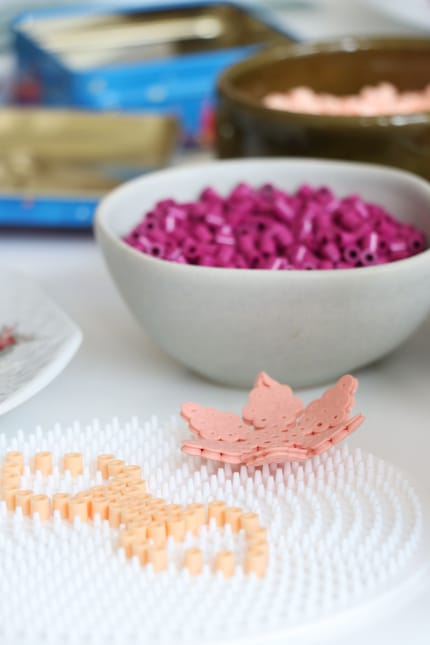
The more layers a flower has, the more real it looks. In Stefanie’s daisy, for example, the flower consists of two flowers glued together on top of each other. For the ultimate 3D effect, you can make a flower basket (yellow in the picture) and base (green in the picture) separately and glue the individual elements together at the end.
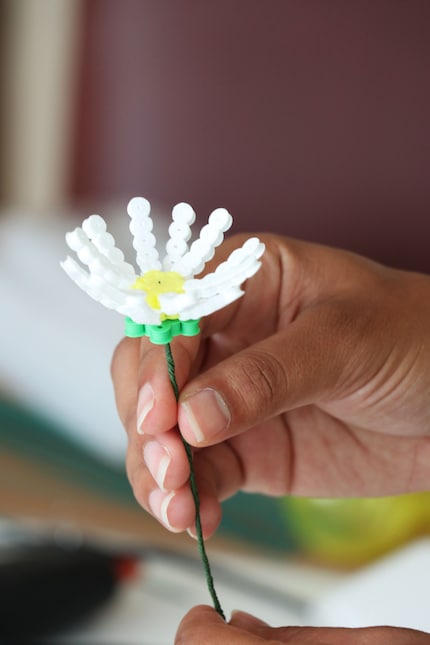
Integrate colour gradations within the individual elements; be it in the flowers, flower basket or base. This gives your flower more dimension. Lavender is a good example of this. Both irregular purple colour patterns and a combination of different shapes are effective.
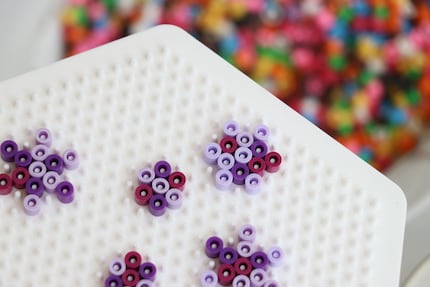
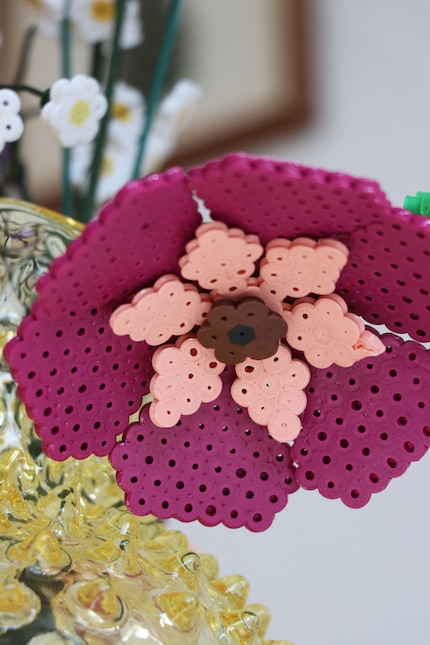
The more thoroughly you iron the beads together, the more stable your creation will be. Take special care to ensure that narrow, unstable joints are properly melted. Fortunately, the baking paper makes it easy to see whether this is the case. This’ll cost you a little more time, but will save you a lot of nervous breakdowns.
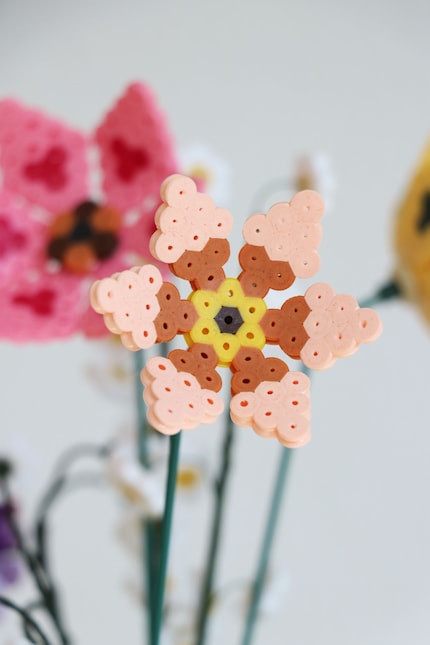
Iron your design on both sides. to ensure it survives in the moulding process when it’s warm. To do this, pull the flower off the peg board, place it with the unironed side facing up between two pieces of baking paper and iron the back.
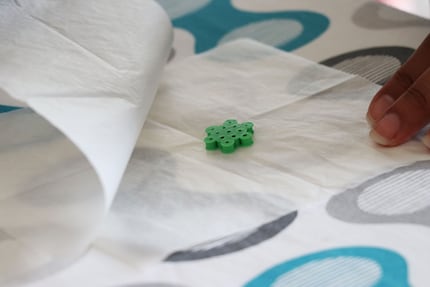
Ironed flowers can remain hot for a long time. Put them in the freezer for a few minutes to speed up the process.
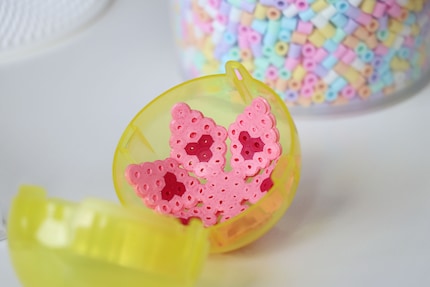
If you struggle to remove the design from the peg board, you can carefully lift it with the tip of a pair of nail scissors.**
At first, I was really careful when ironing to prevent the bead opening in the centre of the flower from melting. Mainly because I thought I could only attach the wire to the flower if I threaded it through the bead. Over time I realised that the flower can also be attached to the wire without threading it through, as long as I use enough hot glue. If you thread an extra green bead through the wire as a link beforehand, the structure can be glued together without any problems. The only exception in my case was the Lavender flower. You actually have to thread several elements vertically through the wire.
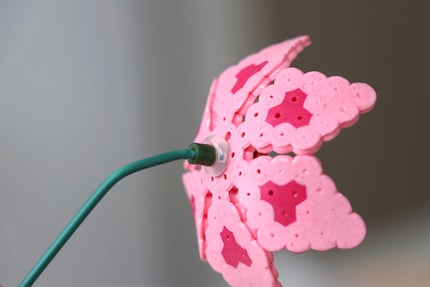
Still want to thread the wire through your flower to be on the safe side and not just rely on glue? Then it’s best to iron the beads as usual then widen the openings with an embroidery needle or pin afterwards.
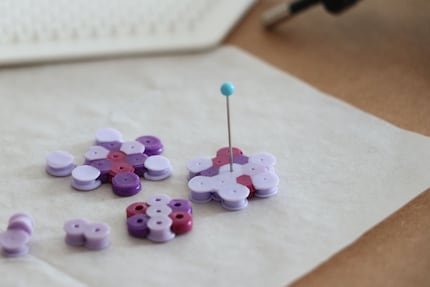
**Slightly bend the upper end of the wire where you want to attach the flower. ** This’ll make your flower stand out better in the bouquet. If you skip this step, your flower will point up towards the ceiling.
For large, heavy flowers, it’s best to attach thicker wire rods for more support. Light, small flowers hold well on thin wire. If you use thin wire, it’s worth wrapping it with masking tape beforehand. This offers a little more stability and also looks quite pretty. For certain flowers, a combination of thick and thin wire is also worthwhile: i.e. a solid, thick stem and fine, small wires for a growing effect. The latter can be cut to size and attached to the main stem with masking tape.
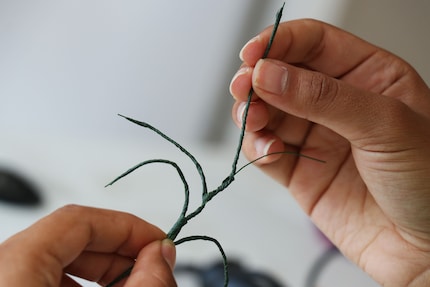
Plan in enough time. We definitely underestimated how long it would take. Stefanie and I spent a good eight hours working on our bouquet. And we were a team.
Anyway, nothing should stand in the way of your long-lasting bouquet. Have fun creating your own!
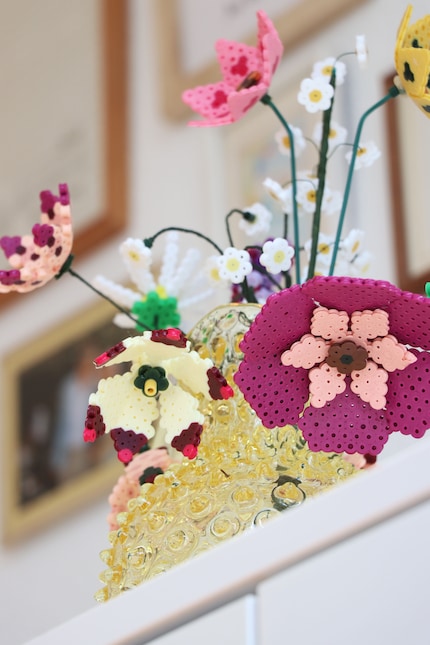
As a massive Disney fan, I see the world through rose-tinted glasses. I worship series from the 90s and consider mermaids a religion. When I’m not dancing in glitter rain, I’m either hanging out at pyjama parties or sitting at my make-up table. P.S. I love you, bacon, garlic and onions.
Practical solutions for everyday problems with technology, household hacks and much more.
Show all